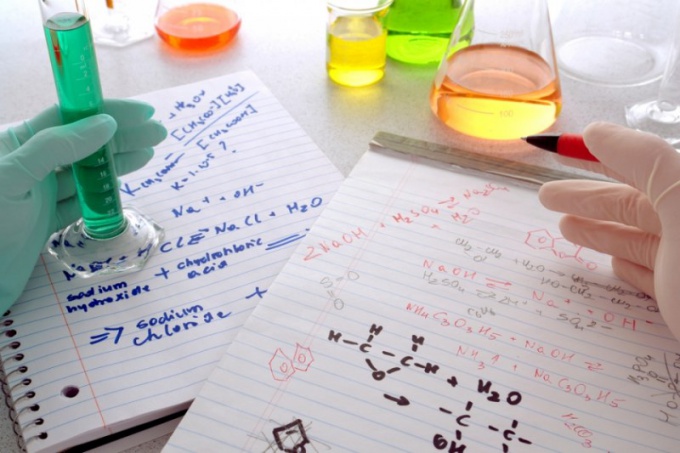What is a mole in chemistry: definition
The mole represents a quantity of a substance that contains as many particles (molecules or atoms) how many atoms contained in 12 g of carbon C. to find the number of particles in 12 grams of carbon, it is necessary to divide the total mass of the substance (0,012 kg) on the absolute mass of the carbon atom, component 19,93x10^(-27) kg.
The result is 6,02x10^23 particles. Found the number equal to the number of molecules or atoms in one mole of any substance is called Avogadro's number. Its dimension is 1/mol, or mol "to the minus one".
If the chemical substance consists of molecules in one mole of this substance would contain 6,02x10^23 molecules. So, 1 mole of hydrogen H2 is 6,02x10^23 molecules of H2, 1 mole of water H2O is 6,02x10^23 molecules H2O 1 mole of glucose C6H12O6 is 6,02x10^23 molecules of C6H12O6.
If the substance consists of atoms in one mole of that substance will contain the same Avogadro the number of atoms is 6,02x10^23. This applies, for example, 1 pray of iron Fe or sulfur S.
As evidenced by the amount of substance
So, 1 mole of any chemical substance contains Avogadro the number of particles constituting a given substance, i.e. about 6,02x10^23 molecules or atoms. The total amount of substance (number of moles) is denoted by the Latin letter " n " or the Greek letter "nu". It can be found against the total number of molecules or atoms of a substance to the number of molecules in 1 mole the Avogadro number:
n=n/N(A), where n – amount of substance (mol), N is the number of particles, N(A) is Avogadro's number.
Hence it is possible to Express the number of particles in a given volume of a substance:
N=N(A) x n.
The actual mass of one mole of a substance is called its molar mass and represent the mean M. It is expressed in "grams per mole" (g/mol), but is numerically equal to relative molecular mass Mr of a substance (if the substance consists of molecules) or relative atomic mass Ar of substance, if the substance consists of atoms.
The relative atomic masses of elements can be found on the periodic table (typically, when calculations are rounded). So, for hydrogen is 1, for lithium – 7, carbon – 12, oxygen – 16, etc. Relative molecular mass are formed from the relative atomic masses of the constituent molecules of atoms. For example, the relative molecular mass of water H2O
Mr(H2O)=2xAr(H)+Ar(O)=2x1+16=18.
Relative atomic and molecular mass is a dimensionless value, expressed as the mass of the atom and the molecule relative to conventional unit – 1/12 the mass of an atom of carbon.
In the model task is usually required to find the number of molecules or atoms into a given amount of substance which mass is a given amount of substance, number of molecules in a given mass. It is important to understand that the molecular formula of a substance indicates the number of moles of each element included in its composition. That is, 1 mol of H2SO4 contains 2 moles of hydrogen atoms H 1 mole of sulfur atoms S, 4 moles of oxygen atoms O.
